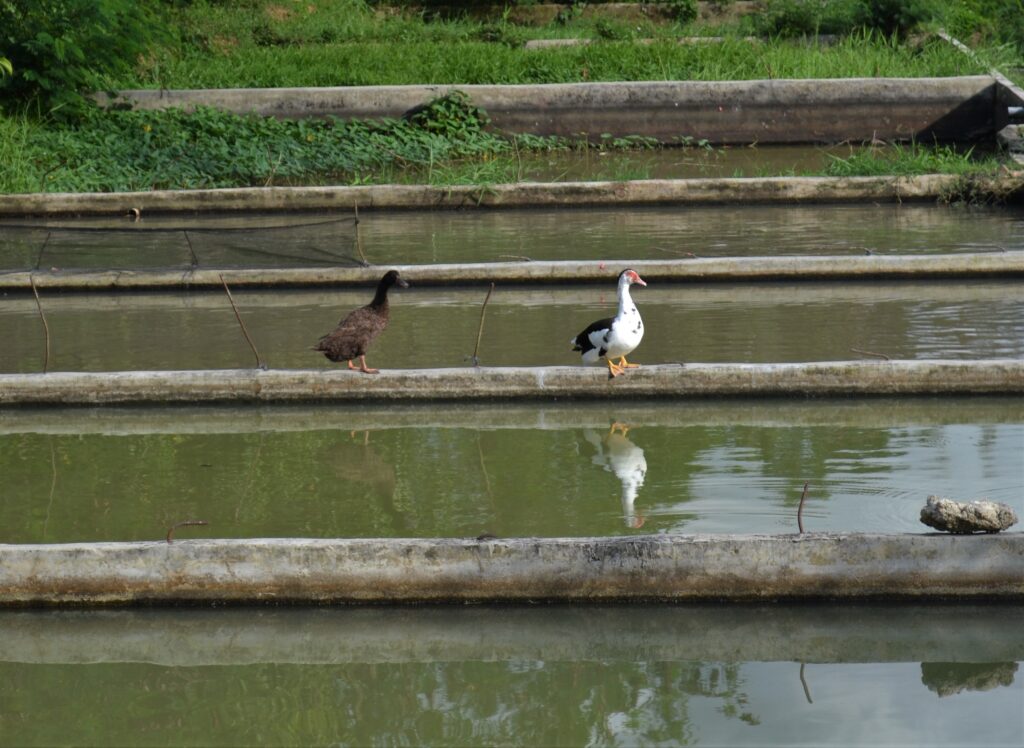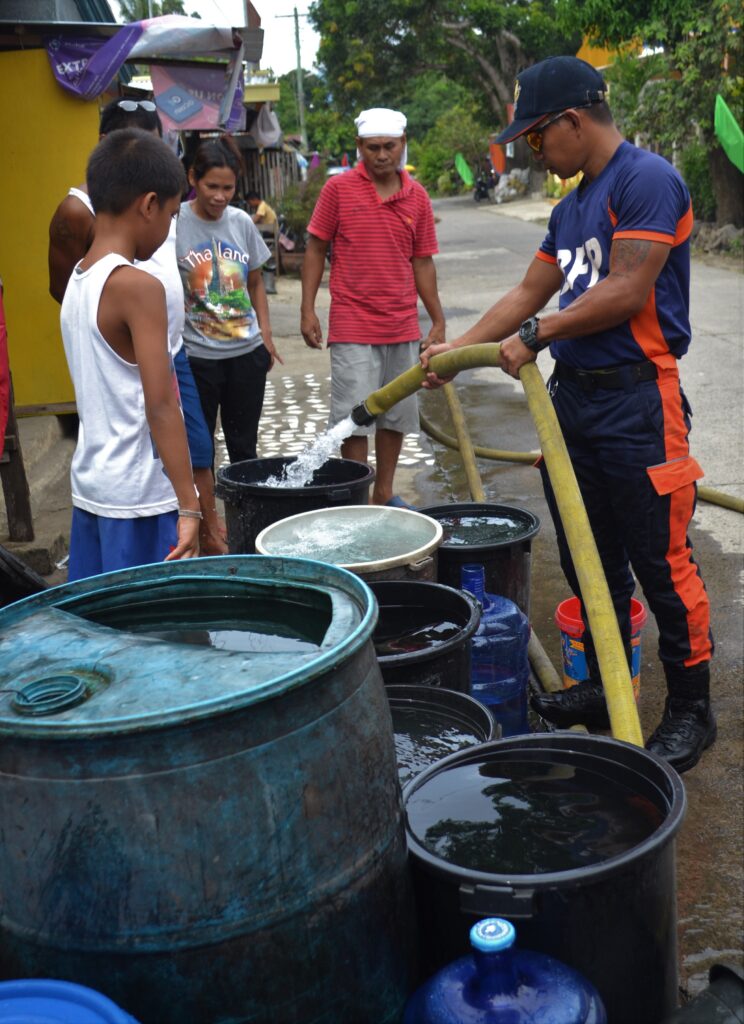Text and Photos by Henrylito D. Tacio
The inconvenient truth about water is out.
In a report, some years back, the Nobel-prize winning United Nations Intergovernmental Panel on Climate Change estimated that by 2080 nearly half the world’s population would be without clean water.
“The necessary sense of urgency is lacking,” said the New York-based United Nations Development Program (UNDP) in a statement. “The facts have been staring us in the face for years. While demand increases, the annual available fresh water supply per inhabitant is regularly decreasing and is expected to fall to an average 4,800 cubic meters by the year 2025 against 7,300 cubic meters in 1995.”
However, the water crisis may come sooner than what the UN body has predicted. “We are fast exhausting our surface water supplies – water consumption and use now exceed the capability of the system to renew itself,” says Terry Leckie, one of Australia’s leading water industry experts and a passionate advocate of water reform. “And the majority of groundwater sources are either already contaminated or soon will be.”
That is what is happening now in the Philippines, where rapid population growth has been a major factor in increasing water usage over the last century. Experts claim that with an annual population rate of 2 percent to 2.3 percent, the Philippines would be facing a water shortage by 2025.
The population datasheet of the Washington, D.C.-based Population Reference Bureau showed the Philippines was home to 96.2 million people as of mid-2012. By mid-2025, there will be about 117.8 million Filipinos living in 30 million hectares, the country’s total land area.

Currently, the water demands – and shortages – of many cities throughout the country are expanding. In a study done by the Japan International Cooperation Agency, nine major cities were listed as “water-critical areas.” These were Metro Manila, Metro Cebu, Davao, Baguio, Angeles, Bacolod, Iloilo, Cagayan de Oro, and Zamboanga.
“The rapid urbanization of the Philippines, with more than 2 million being added to the urban population annually, is having a major impact on water resources,” notes the Asian Development Bank (ADB) in its Asian Water Development Outlook some years back.
In Metro Manila, for instance, residents often complain of a lack of water during the summer months. In some parts of the metropolis, the water supply situation reaches a vulnerable state where the little amount of water some residents get is not enough even for emergency purposes like cooking and drinking.
Aside from rapid population growth, the Philippines’ water crisis can also be traced to degradation conditions of the environment and pollution. According to an ADB study, only about 33 percent of river systems are classified as suitable public water supply sources, and up to 58 percent of groundwater is contaminated.
Of the 457 water bodies classified by the Department of Environment and Natural Resources (DENR), only 51 percent meet the 1996 water quality standards. Sixteen rivers are considered biologically dead during dry months.
In addition, wasteful and inefficient water use, saltwater intrusion, high non-revenue water levels due to leaks and illegal connections, and denudation of forest cover are placing major strains on water resources. “Combined with growing population pressures, it is becoming more difficult to provide basic water services,” the ADB study surmised.

Dr. Sandra Postel, director of the Massachusetts-based Global Water Policy Project, believes water problems will be right there with climate change as a threat to the human future. More importantly, higher global temperatures will worsen the current water problems.
“Although the two are related, water has no substitutes. We can transition away from coal and oil to solar, wind and other renewable energy sources. But there is no transitioning away from water to something else,” said the head of the group that seeks to save freshwater.
The majority of the world’s water is used for agriculture or food production. The Virtual Water App (http://virtualwater.eu/) is a quick way to learn how much water is used in the production of beef (4,650 liters of water for 300 grams of beef steak) and chocolates (2,400 liters per 100 grams of chocolate). It takes 1,000 tons of water to grow one ton of rice grain.
“Water is the most precious asset on Earth,” points out Dr. Sandra Postel, director of the Massachusetts-based Global Water Policy Project. “It is the basis of life.”
“As water is an absolutely vital resource, at the center of life itself, it is a key integrating factor in the environment. Without sustainable water management to ensure that there are sufficient supplies of clean, safe water, the health of ecosystems and those who depend on them, especially people, suffer,” said Dr. Klaus Toepfer, during his term as executive director of the Nairobi-based United Nations Environment Program.
Next to air, water is the element most necessary for survival. Water makes up more than 60 percent of your body weight. Proteins make up only 18% while fats encompass 15%, minerals 4%, carbohydrates 2%, and vitamins less than one percent.
Your brain contains 74% water, blood contains 83% water, lean muscle has 75% water, and bone has 22% water. A lack of water affects everything from your digestive tract to your immune system. It also helps regulate your body temperature.
A household of five needs at least 120 liters per day to meet basic needs – for drinking, food preparation, cooking and cleaning up, washing and personal hygiene, laundry, house cleaning, according to the Washington-based Worldwatch Institute, a global environmental group.
A person needs at least 24 liters of water daily or one liter per hour. Even when he breathes, he still needs water. “Our lungs must be moist to take in oxygen and excrete carbon dioxide,” wrote Leroy Perry in a Reader’s Digest article. “It is possible to lose half a liter of liquid each day just by exhaling.”
Only 2.5 percent of the water covering over 70 percent of the earth’s surface is considered freshwater. And only 1.3 percent is available for human use since most freshwater is trapped in glaciers, ice sheets, and mountainous areas. Freshwater is drawn either from wells (tapping underground sources called aquifers) or from surface flows (like lakes, rivers, and human-made reservoirs).
“There is no water on earth now than there was 2,000 years ago,” notes the US National Wildlife Federation, which has been working for years to protect water resources not only in the United States but throughout the world as well. “This limited supply of freshwater must meet the needs of a human population that has tripled in the last century and continues to grow at almost 80 million people per year.”
“Whiskey’s for drinkin’,” Mark Twain once wrote. “But water is for fightin’ over.” Sir Crispin Tickell, one of the 1992 Earth Summit organizers in Rio de Janeiro, agreed: “The world has got a very big water problem. It will be the progenitor of more wars than oil.”

